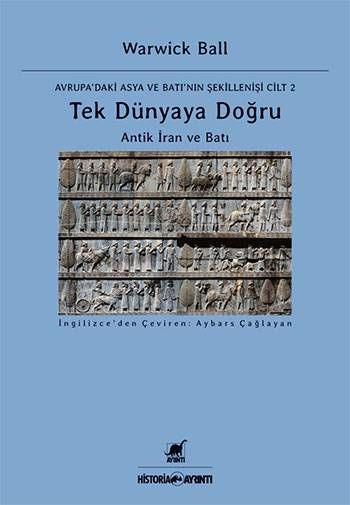
Towards a Single World Ancient Iran and the West
The Persian Empire was the first most important Eastern power to expand its borders to Europe. However, unlike the Phoenicians who came to Europe before them for trade and settlement, the Persians, when they set foot on the continent in the sixth century BC, sought to incorporate a part of Southeastern Europe into their centrally governed empires, in order to make them their province. However, among all the peoples who came from the East and stepped into Europe, the Persians had the smallest, most distant and short-lived bridgeheads. Although the Phoenicians, Arabs, Turks and Mongols stayed in these lands for a longer time, the Persians could only hold on for 60 years. However, this contact is often approached in terms of conflict: the Greco-Persian Wars, Alexander's conquests, and the numerous conflicts between Rome and Persia. However, European contact with ancient Iran was neither short-lived nor conflictual. This is the second volume of the series The Shaping of Asia and the West in Europe, examining the relationship between East and West that was the genesis of the complex interaction that continues to this day.
Iranian religious ideas flowed to the West throughout the Antiquity in a way that profoundly influenced the emergence of Christianity, and continued to flow until they culminated in the most important pre-Reformation religious rebellion in Europe. Ancient Iran's contribution to later generations is more of an idea than anything else. Ancient Iran, which clearly expressed the concept of a single universal creator, was the first civilization to grope its way to the idea of a single universal world and, in the words of historian JM Roberts, lay "the foundation of the world civilization of the future." The one world idea will persist...
The idea of a single world transcending the political and ethnic boundaries specific to ancient Iran is today embodied in an inscription - the words of which belong to an Iranian poet - at the entrance of the United Nations building in New York.
(From the Promotional Bulletin)
Number of Pages: 288
Year of Printing: 2015
Language: Turkish
Publisher: Details Publications
First Print Year: 2015
Number of Pages: 288
Language Turkish
| Publisher | : | Details Publications |
| Number of pages | : | 288 |
| Publication Year | : | 2015 |
| ISBN | : | 9789755399683 |
| Translator | : | Aybars Caglayan |
| The heart | : | Turkish |


